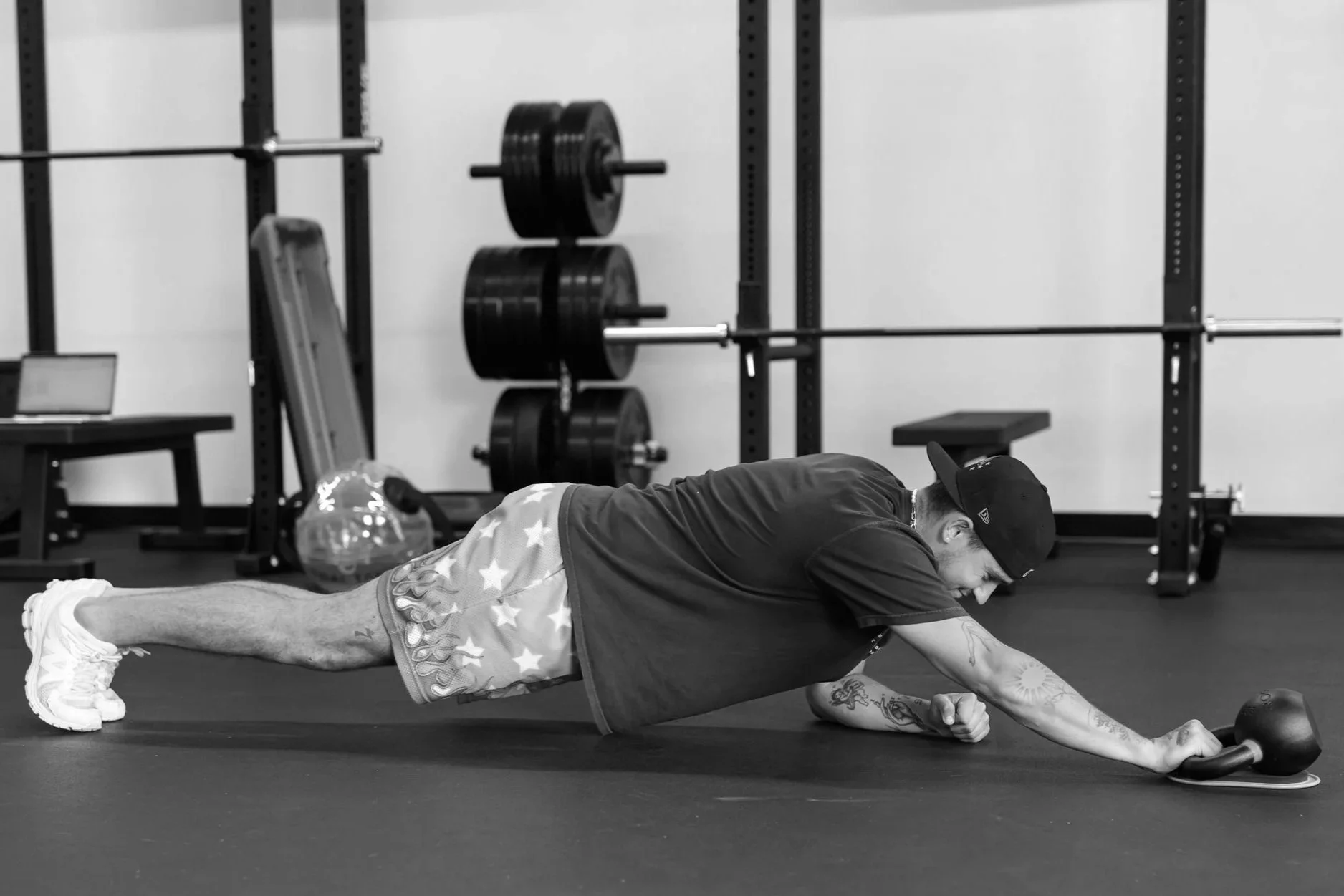Shoulder Anatomy 101: How Instability Happens and How to Fix It
Plank with shoulder reach
Your shoulder is an incredible piece of engineering. It’s the joint that lets you throw a baseball, reach the top shelf, or wave to a friend across the street.
But here’s the catch—because it’s so mobile, it’s also one of the most vulnerable joints in your body. And one of the most common issues we see here at Living Well Physical Therapy & Performance; Shoulder instability.
Let’s take a quick tour of your shoulder and see why this “loose” feeling can cause so much trouble.
Meet Your Shoulder: Anatomy 101
Think of your shoulder as a golf ball sitting on a tee—only the ball is much bigger than the tee, and it’s upside down! That means the bony structures are built for movement, not stability… and it relies heavily on muscles, ligaments, and cartilage to keep it in place.
Here’s what’s at play:
The Bones
Humerus – your upper arm bone, the “ball” in our golf ball analogy
Scapula – your shoulder blade, the socket the ball fits into
Clavicle – your collarbone, the strut that keeps everything aligned
The Support System
Labrum – a ring of cartilage that deepens the socket (like padding on the tee)
Ligaments & Capsule – strong bands and a soft tissue “envelope” that hold the joint together
Rotator Cuff Muscles – the four muscle “bodyguards” that stabilize and guide movement
What Is Shoulder Instability?
Shoulder instability is when the structures that hold your shoulder in place get stretched, torn, or weakened. The result? The ball doesn’t sit snug in the socket—it moves too much, sometimes partially slipping out (subluxation) or coming completely out (dislocation).
Why It Happens:
A hard fall or sports injury
Repetitive overhead motion (throwing, swimming, weightlifting)
Naturally loose ligaments (some people are just more flexible)
How It Feels
Physical therapy is a cornerstone in treating shin splints. It focuses on reducing pain, addressing the root causes, and creating strategies to prevent future issues. Here’s how:
A “slipping” or “dead arm” sensation
Pain with certain movements—especially overhead or behind your back
Weakness or loss of throwing power
Repeated dislocations
The Fix: Restoring Stability
The good news? Most cases of shoulder instability don’t require surgery—especially if we start rehab early.
Physical therapy focuses on:
Rotator cuff strengthening – so your shoulder has muscular stability
Shoulder blade control – because your scapula is the foundation for every arm movement
Posture and mechanics – to reduce stress on the joint
In more severe cases (like a large labral tear), surgery may be necessary—but even then, physical therapy is your ticket to getting back in the game.
When to Get Help
If your shoulder keeps “slipping,” you feel a pop, or you ever experience a “dead arm” don’t wait. The earlier you get evaluated, by a Doctor of Physical Therapy, the sooner you’ll be back doing what you love!
Shoulder instability can be a frustrating setback, but with the help of our expert team at LivingWell Physical Therapy & Performance, athletes and active individuals can overcome this condition and return to the activities they love. By addressing the root cause, improving strength and stability, and restoring optimal shoulder mechanics, physical therapy offers a complete approach for both recovery and prevention. Don’t let shoulder instability hold you back—schedule an appointment with LivingWell Physical Therapy & Performance and take your first step toward pain-free, confident movement.




